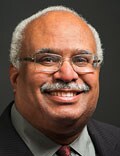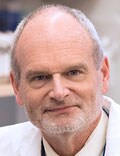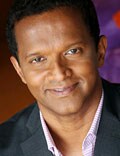Editor's note: Find the latest COVID-19 news and guidance in Medscape's Coronavirus Resource Center.
As coronavirus variants ratchet up the COVID-19 threat, six top US public health experts double down on the best public protection methods science has to offer.
All of the experts told Medscape Medical News that blanketing the country with vaccines in arms is the surest way to end the pandemic, but straightforward public health measures will slow the raging numbers now.

Georges Benjamin
The growth of variants doesn't mean the virus "has taken on new speed or new superpowers," American Public Health Association Executive Director Georges Benjamin, MD, told Medscape Medical News. "They can't crawl around the side of a mask any better than any other kind of virus."
The new threat is that variant viruses may stick more firmly to cell receptors so if you are exposed, you are more likely to be infected, he said. Early reports also indicate the B117 variant first identified in the United Kingdom might be more deadly.

William Petri
William Petri, MD, PhD, chief of the Division of Infectious Diseases and International Health at University of Virginia in Charlottesville, said it also takes a smaller viral load to become infected with the variants, "which will affect all of the measures we have in place to limit transmission."
The experts say the variants haven't changed what people should do to protect themselves, but the new risks have dialed up the urgency for adherence.
Here, then, is the latest on masking, hand washing, social distancing, and surface cleaning.
Double-Masking Gets CDC Backing
The Centers for Disease Control and Prevention (CDC) weighed in on Wednesday with a double-masking recommendation.
CDC researchers found that in lab tests with source and receiver dummies, exposure to potentially infectious aerosols dropped by about 95% when both had tightly fitted double masks.

Saju Mathew
Saju Mathew, MD, MPH, a primary care physician and public health specialist with Piedmont Healthcare in Atlanta, has been recommending two masks since the variants became a threat. He said he's glad the CDC made it official.
When double-masking, a medical mask is the first layer, with a cloth mask on top to pull it snug, he said.
People who were already skeptical about wearing a mask might actually wear one now that the CDC supports two, he said, and those already diligent about one will likely consider two.
Scientific research shows masks are effective. A CDC report demonstrates COVID-19 hospitalizations dropped in states that mandated masks.
"Science in the real world shows that masks are highly effective in reducing risk," Benjamin said. "It's more about protecting against the spread by droplets — think of it like someone spitting in your face — than inhaling or exhaling around the mask."
Not all of the experts are sold on two masks, even with the CDC's decision though.

Lisa Maragakis
Lisa Maragakis, MD, MPH, senior director of infection prevention at the Johns Hopkins Health System in Baltimore, said she was surprised by the CDC recommendation. She still feels one well-fitted, well-made mask is better.
She pointed to potential strain on breathing and discomfort that might lead to a person taking the masks off or tugging at the edges, which ups the potential for transmission from hands to the nose or mouth.
She said wearing one well-fitted and tightly woven mask, without gaps around the nose or face, is more important and a better strategy than wearing two. The Johns Hopkins Health System does not allow bandanas, gaiters, masks with exhalation valves, or mini shields because they do not provide sufficient protection. Some of these shields are made to look like a mask, for example, but are open at the bottom.
Handwashing
Handwashing is one of the simplest and most effective preventive measures, but probably the one done least correctly, the experts say.
No special soaps are needed, Benjamin pointed out. Any soap and warm water will do. But most people don't take the recommended 20 seconds and lather up between fingers and under nails and rings, he said.
Hand sanitizers are a good backup when access to soap and water is limited, he added.
Petri said handwashing is particularly effective with this RNA lipid-envelope virus because it is so unstable. It can't stand up to a good soaping.
"Detergents will destroy the fatty membrane of the virus," he said, in contrast to viruses such as polio which have a protein capsule and are relatively resistant to detergents.
Seth Cohen, MD, MSc, medical director for infection prevention and control at the University of Washington Medical Center in Seattle, said it's important to remember the goal is not to get to sterile with public hand washing, but to reduce risk in a common-sense way.
He cautioned that intact, healthy skin is in an important defense for the immune system, so the goal is not to scrub hands until they chap and crack.
Moisturizer, he said, is also important along with frequent hand washing, especially in the dry winter months.
Physical Distancing

Seth Cohen
Peter Chin-Hong, MD, professor of medicine and infectious disease specialist at the University of California, San Francisco, said the 6-foot rule for physical distancing is a guideline that needs context, and noted that the World Health Organization says the low bar should be 3 feet.
Six feet is likely not enough for people who scored a Super Bowl ticket and have had a few drinks and are cheering and screaming, he said. But in other, less boisterous situations, the 6-feet guideline may be overkill.
The experts advise reducing risk by using the 6-foot-rule as a baseline and looking for opportunities to be even further away from others, as every added foot increases protection.

Peter Chin-Hong
Chin-Hong also added a fourth "W" to the "washing hands, wearing a mask, and watching distance" mnemonic. "Watch your wind," he said, meaning to seek out good ventilation.
As the pandemic approaches its 1-year mark in the United States, fatigue is setting in and people are losing awareness or vigilance for the 6-foot rule, Maragakis pointed out.
"People are focused on a computer screen, and they're looking at it together and suddenly their heads are together," she said. "Or they are talking and can't hear each other and come closer."
Carpooling can also be problematic. Benjamin acknowledged that rolling all the windows down improves safety but is not practical in all states this time of year. He pointed to a study in Science Advances that recommends opening two windows — the window opposite the driver and the window farthest from the passenger — for a cross-current.
It's all about reducing risk, Mathew said. "People are tired. I get it," he acknowledged, but he strongly advises against piling risk upon risk.
"If you are comfortable going to a gym," he said, "don't also then do indoor dining that night."
Cohen said another area of concern is that as businesses are opening up and coworkers start seeing each other again regularly, people tend to relax protection measures.
"I know even though people at work may feel like family, we need to remind folks they are not a part of your biological family and we need to wear masks around them," he said.
"We expect viruses to mutate," Cohen said. "But the reason they mutate is that this virus is out of control and it is finding new hosts, new people to mutate in. The only way to reduce the number of new variants in our community is to take people out of the equation and that means social distancing. These variants can't leap long distances."
Cleaning Surfaces
In the great scheme of mitigation efforts, surface cleaning falls below mask wearing, handwashing, and social distancing, Mathew said.
"We have found that is not as dangerous as being close to someone not wearing a mask in an environment where there is not good ventilation," he said.
Mathew warned of "the two Ps: proximity and prolonged contact." Those are much bigger threats, he said.
The experts advise concentrating on the high-touch areas. Open doors with your foot. Push a pedestrian crossing button with your elbow. Turn doorknobs with a cloth or wipe.
The virus is known to become unstable after 24 hours on surfaces, Petri said, so leaving nonperishable groceries or other purchases in the bag for 24 hours adds protection.
Experts say each layer of protection has gaps — like Swiss cheese — and adding layer upon layer decreases the odds the virus will slip through.
Chin-Hong said focus on protecting the nose and mouth "to get the biggest bang for your buck." If people think they have to constantly monitor a COVID hygiene checklist, the bar will be seen as too high, he said.
They also emphasize that even as people are vaccinated, these public health prevention measures need to stay.
The vaccine doesn't completely eliminate the risk of being infected, Petri said, and it's important to remember that the vaccines with efficacy of at least 95% were tested in blinded study participants who were practicing masking and physical distancing before the current variants took hold.
Whether the vaccines' efficacy will remain high with the new variants, and as fatigue with prevention measures increases, remains to be seen, Petri said.
Marcia Frellick is a freelance journalist based in Chicago . She has written for the Chicago Tribune, Science News and Nurse.com and was an editor at the Chicago Sun-Times, the Cincinnati Enquirer, and the St. Cloud (Minnesota) Times. For more news, follow Medscape on Facebook, Twitter, Instagram, and YouTube.
Medscape Medical News © 2021
Cite this: As Variants Spread, Top Experts Lay Out Best Protection Plan - Medscape - Feb 11, 2021.








Comments